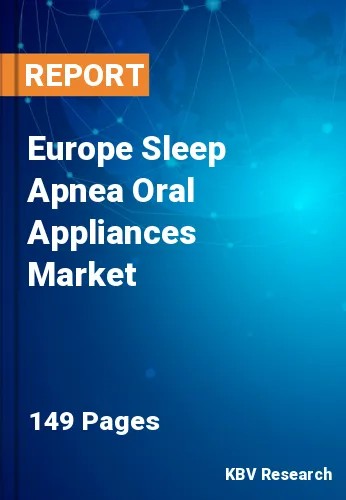The Europe Sleep Apnea Oral Appliances Market would witness market growth of 15.0% CAGR during the forecast period (2023-2030).
As more research supports the efficacy of these appliances in managing mild to moderate obstructive sleep apnea and snoring, healthcare professionals are increasingly confident in recommending these devices. A shift toward interdisciplinary collaboration between dental professionals and sleep specialists has played a crucial role in adopting these appliances. This collaboration ensures a comprehensive approach to sleep apnea management, with dental professionals contributing their expertise in oral appliance design and fitting while sleep specialists oversee the overall treatment plan.
Oral appliances for sleep apnea are frequently used to treat mild to moderate cases of obstructive sleep apnea. As a less intrusive option to Continuous Positive Airway Pressure (CPAP) equipment, they minimize airway obstruction during sleep by repositioning the jaw and tongue. Oral appliances are effective in addressing chronic snoring, which can be indicative of underlying sleep disorders. By adjusting the position of the jaw and tongue, these devices reduce airway resistance, decreasing or eliminating snoring. This use improves overall sleep quality for the affected individual and their sleep partner.
As per the UK government’s report named “Future of an aging population,” by 2040, nearly one in seven people is projected to be over 75. By 2037, there are projected to be 1.42 million more households headed by someone aged 85 or over, an increase of 161% over 25 years. The proportion of the working-age population aged between 50 and the state pension age (SPA) will increase from 26% in 2012 to 34% in 2050, an increase of over 5.5 million people. Similarly, according to a report on the French aging policy published by the UN, as in other European countries, France faces a continuous and significant increase in the number of older people. The nation had 15 million people aged more than 60 in France in 2012, expected to reach 24 million in 2060. Hence, the factors mentioned above will drive the regional market growth.
The Germany market dominated the Europe Sleep Apnea Oral Appliances Market by Country in 2022, and would continue to be a dominant market till 2030; thereby, achieving a market value of $69,239.8 Thousands by 2030. The UK market is exhibiting a CAGR of 13.9% during (2023 - 2030). Additionally, The France market would experience a CAGR of 15.8% during (2023 - 2030).
Free Valuable Insights: The Global Sleep Apnea Oral Appliances Market will Hit USD 1048.3 Million by 2030, at a CAGR of 15.2%
Based on Gender, the market is segmented into Male and Female. Based on Product, the market is segmented into Mandibular Advancement Devices, Tongue-Retaining Devices and Daytime Nighttime Appliance. Based on Age Group, the market is segmented into 40-60 Years, Above 60 Years and Below 40 Years. Based on Distribution Channel, the market is segmented into Hospital Pharmacies & Dental Clinics, Retail Pharmacies and Online Pharmacies. Based on Purchase Type, the market is segmented into Physician-prescribed/Customized oral appliances and Online OTC Oral Appliances. Based on End User, the market is segmented into Home Care Setting/ Individuals, Hospital, and Dental Clinics. Based on countries, the market is segmented into Germany, UK, France, Russia, Spain, Italy, and Rest of Europe.
By Gender
By Product
By Age Group
By Distribution Channel
By Purchase Type
By End User
By Country
Our team of dedicated experts can provide you with attractive expansion opportunities for your business.

